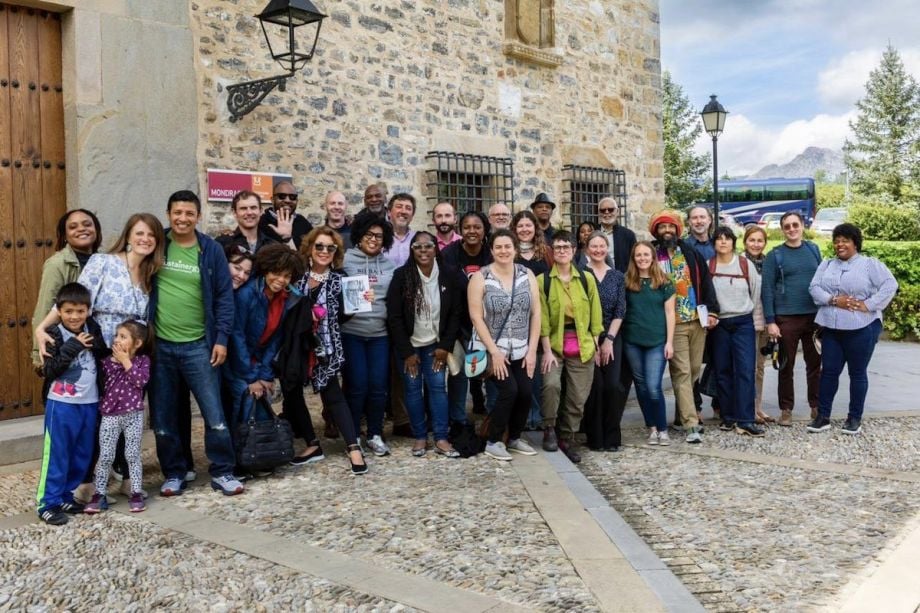Ohio, as far as Basque influence is concerned, is rather a ways away from the western US states where Basque ancestry and culture have a larger impact and are more obvious in the community. Nevertheless, we have had occasion to refer to Ohio before.
For example, we did so to welcome blues musician Patrick Rynn, who was born there. But more often, we’ve done so to talk about economics, especially their interest in our Basque co-op system for developing their own systems in Ohio (here and here).
And we mention this again today because the Basque co-op model is once again serving as a guide. Cinnamon Janzer has just published an article on the Next City website about a delegation the Cincy Co-op, a non-profit union of co-ops set up in 2011 in the Cincinnati area, sent to the Basque Country. This article joins a long list of articles we’ve compiled on the blog about Mondragón and its status as a role model.
And for the Cincy Co-op, the Mondragón Cooperative is quite a role model: they go so far as to say as much on their website’s history section:
“Co-op Cincy believes the answer lies in the success of Spain’s Mondragon, the largest cooperative network in the world. Mondragon’s durable business model is the foundation for our efforts to create competitive enterprises, foster social and economic justice, and empower worker dignity by creating jobs accountable to workers and communities.”
Both the Next City article and the Cincy Co-op history page did leave us thinking that they had glossed over, or downplayed, an element that we believe is essential: the profoundly Basque character of the co-op movement. It is no coincidence that it has such deep roots and has triumphed so well in our country, while in others, the model has been far more difficult and complex to develop. As we’ve said before, this is not a trivial detail, and those who visit our country to understand this co-op system, so well-rooted in amongst us, must be aware that this is an essential part of the model’s DNA.
To understand this fundamental element, we recommend reading the Nick Romero article that was published in the New Yorker. In it, he explains why this co-op model meshes so well with the Basques’ way of being.
We do hope that all co-op projects organized around the world are as successful as the Basque co-op model. After all, this is an economic model that represents the best principles of social justice, workers’ access to the means of production, the responsibility of the members/workers to ensure the company succeeds, democracy within the company, collaboration and better distribution of wealth, and solidarity among the workers and with other co-ops.
This model, unlike those comments that are so often thrown about, is quite far (if not diametrically opposite) the “communist model.” Seeing the co-op model as something “communist” is just the consequence of a lack of knowledge of how co-ops work. This (sometimes willful) ignorance also ensures that wealth is accumulated in the hands of the few.
Next City – 21/6/2023 – USA
What Ohio’s Co-op Evangelists Learned From Spain’s Thriving Union Co-op Network
or his 91st birthday three years ago, Bob Moore, the namesake behind the ubiquitous Bob’s Red Mill Natural Foods brand, surprised his employees during a celebration of his 91st birthday. He unveiled an Employee Stock Ownership Plan that, as of April that year, turned his roughly 600 employees into co-op owners of a company that generated more than $50 million in annual sales in 2018.
(Follow) Google automatic translation is unavailable for this page
Last Updated on Dec 3, 2023 by About Basque Country





























